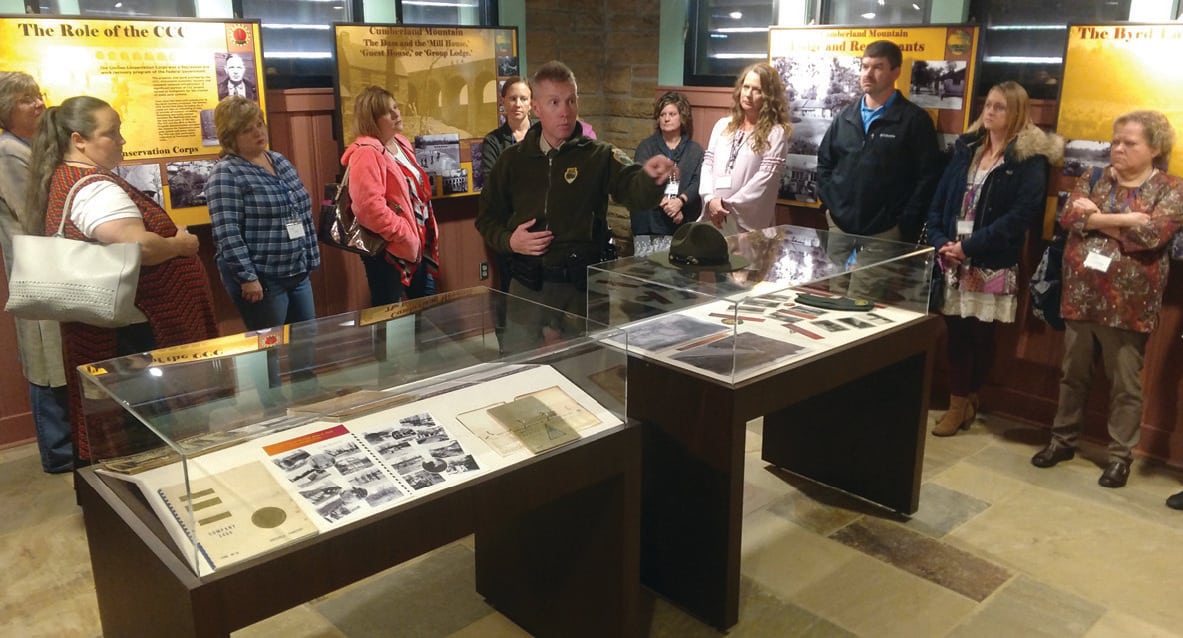Public schools to teach a semester of Tennessee history in fifth grade
Nearly two years ago, I wrote a column concerning serious talk about deleting a lot of Tennessee history from the social studies standards.
At the time, I was afraid that the state would delete from the standards Tennessee-specific history topics such as the Donelson Party journey, the Lost State of Franklin, Civil War soldier Sam Watkins and the tent city movement of the 1950s. There was a proposal on the table to do just that, and I was worried about what would happen to our culture as a result.
Well, quite a bit happened in the months that followed.
After a long process involving the Tennessee Department of Education, Tennessee Board of Education and Tennessee General Assembly, Tennessee history was not deleted from the social studies standards. In fact, starting in 2019-2020, an entire semester of stand-alone Tennessee history will be taught in fifth grade.
To describe how this came about, I first need to explain the way Tennessee history has been taught in schools in recent years.
You see, prior to the year 2001, there were focused, semester-long Tennessee history courses in grades four and seven. At that time, these Tennessee history courses were replaced with a system under which our state’s history was “embedded” into the U.S. history curriculum. The way the system worked, students were supposed to learn about Tennessee history when they covered U.S. history in grades four, five, eight and 11. So, for instance, when students learned about the American Revolution in fourth and eighth grades, they were supposed to learn about migration into present-day East Tennessee at the same time. When students learned about the Civil War in the fifth and eighth grades, they were supposed to cover (and hopefully visit) Tennessee Civil War sites such as Fort Donelson and the Battle of Franklin.

Teachers take a tour of the new Civilian Conservation Corps museum at Cumberland Mountain State Park as part of last November’s Tennessee History for Kids fall retreat.
My nonprofit organization, Tennessee History for Kids, was started to help teachers cover these Tennessee-specific topics. To this end, we created a free website, posters, trading cards, $2 grade-specific booklets and other products to help teachers teach these Tennessee history topics.
I was a fan of this “embedding” because I think the best way for students to understand history is through local connections. However, not all teachers felt that way. I have to admit that in the last 15 years, many teachers told me that they didn’t like embedding and had a hard time doing it in their lessons.
Many parents, school board members and state legislators were also not fans of embedding Tennessee history. On at least two occasions, the late State Sen. Douglas Henry proposed bills that would have required Tennessee to go back to having a stand-alone course on its own history. Henry’s bills never passed. But he and I talked about this topic many times.
In the spring of 2017, State Rep. Art Swann (who has since been elected to the senate) and Sen. Ferrell Haile proposed a bill that required public schools to return to having a course in Tennessee history. They named their proposal after Sen. Henry. It passed unanimously in both chambers, although the matter received a lot of debate in House committee.
As a result of this new law, the social studies standards include a semester of stand-alone Tennessee history. Let me explain how this will work.
As I mentioned previously, under the system our public schools have used in recent years, Tennessee history has been “embedded” into U.S. history classes. The first half of U.S./Tennessee history has been taught in grades four and eight. The second half of U.S./Tennessee history has been taught in grades five and 11.

Cherokee interpreter Mark Finchum talks to kids at the Tennessee History Festival at the Bicentennial Capitol Mall State Park.
Under the new standards, the embedding of Tennessee history into U.S. history will remain in grades eight and 11. However, U.S. and Tennessee history are being segregated in grades four and five. Under the new system, students will take three semesters of “straight-up” U.S. history in fourth grade and fall of fifth grade. Then, in the spring of fifth grade, they will take a full semester of Tennessee history.
Officially, these new standards go into effect in school year 2019-2020. However, a recent announcement by the Department of Education that social studies standardized testing will not take place for grades three, four and five this school year has resulted in a situation where some school systems have moved ahead with the new standards already — at least for kindergarten through fifth grade.
News that the spring semester of fifth grade will become the “Tennessee history” semester has spread slowly. However, this will have a big impact on historic attractions such as the Carnton Plantation, Cumberland Homesteads, Shiloh National Military Park, Sycamore Shoals State Park and many others. Under embedding, historic attractions suffered in part because principals and school systems were never sure what grade should be taking field trips.
Not anymore. Under the new standards, I think school systems will have a better idea of which grades should take a field trip to the local historic attraction. I also think historic sites will have a better idea of whom to target.
Jeff Sellers, director of education and community involvement for the Tennessee State Museum, expects a “whole lot” of fifth-graders to come to the new museum (which opens in October). “The creation of the stand-alone class really helps us,” says Sellers. “It helps us target that age group and build resources connected to artifacts and primary sources.”
This also means big changes for Tennessee History for Kids. You see, carving out a stand-alone Tennessee history semester was just a small part of a larger process under which all social studies standards were rewritten for all grades, K through 12. The changes were so extensive that we are rewriting all of the Tennessee History for Kids booklets, not to mention making major changes to our website and teacher training.
Speaking of our booklets, there will be two new ones for the new stand-alone Tennessee history semester. So I’d better get back to it!



